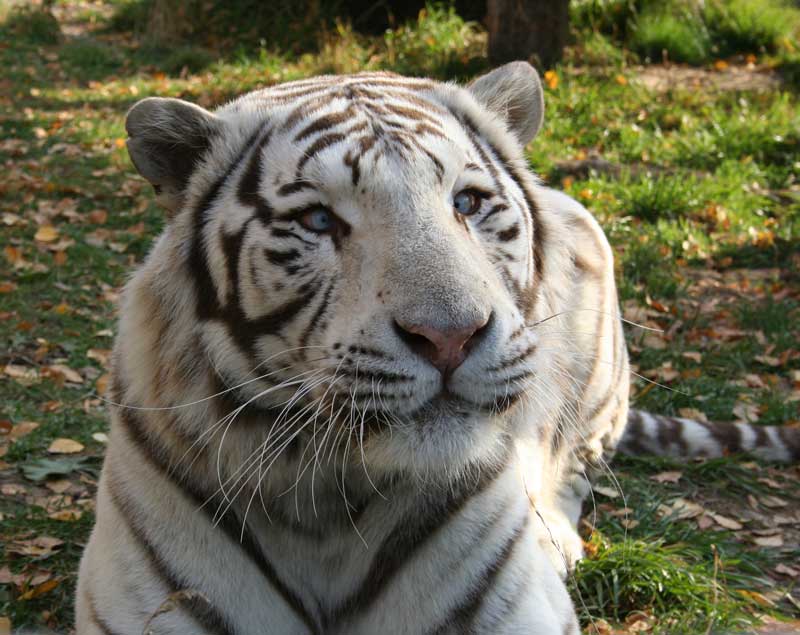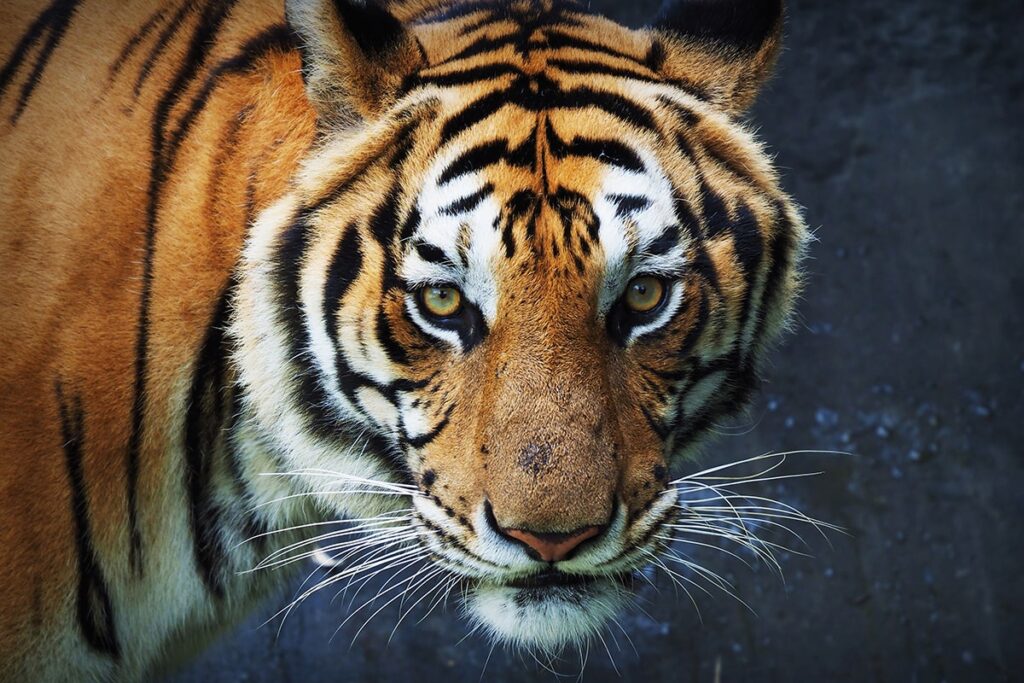- Largest feline: Although tigers are the largest members of the cat family, they are also the species that varies the most in size. The largest subspecies is the Siberian tiger (Panthera tigris altaica), which grows to over 3.5 m long and weighs over 300 kg. The smallest subspecies is the Sumatran tiger (Panthera tigris sumatrae), which grows to only 2 m long and weighs around 100 kg.
- Swap: A tiger is capable of taking down animals twice its own size, making it one of nature’s most feared predators. Their prey typically includes buffalo, deer, wild boar, monkeys and other larger mammals, but they can also eat smaller animals such as lizards, hedgehogs, rats and the like. If a tiger’s prey is too large, they will sometimes drag it to a thicket and cover it with leaves to return to it later
- Teeth: Like its ancestor, the sabre-toothed tiger, the tiger relies heavily on its teeth for survival. If a tiger loses its canines due to injury or age, it loses the ability to kill most of its prey and usually dies of starvation soon after
- Territories: Tigers live alone and mark their territories to keep rivals at bay. The marking itself is done through urine and scratching trees. Tiger territories can be up to 100 km2 and male tigers generally have larger territories than female tigers. Furthermore, male tigers’ territories do not overlap (unlike females)
- Urine: A tiger’s urine smells strongly of buttered popcorn! A tiger’s urine reveals its age, sex and reproductive state to other tigers (they can smell all of this)
- Eyes: Most tigers have yellow eyes, but white tigers typically have blue eyes. This is because the gene for blue eyes is linked to the gene for white fur. Similarly, the gene for cross-eyedness is linked to the aforementioned genes, which is why some white tigers have blue, cross-eyed eyes
- Sight: Tigers possess eyes positioned in the front rather than on the sides of their heads, granting them binocular vision. This binocular vision arises from the overlapping field of vision of each eye, resulting in the formation of a three-dimensional image. This ability allows tigers to precisely gauge distances and depth, proving invaluable when navigating their intricate surroundings and stealthily tracking prey
- Food intake: Unlike lions, male tigers typically let females and cubs eat first. Tigers rarely fight over prey and usually eat first when it’s their turn
- Roar: The roar of a tiger can be heard from 2-3 kilometers away and is used solely to communicate with other tigers. This also means that tigers don’t roar when they attack (although most people have a different impression from the movies)
- Hunting: Although tigers are fast over short distances, they can’t run faster than ungulates such as deer. Therefore, they typically use different tactics; they sneak up on their prey and attack from behind or from the side

Fact: White tigers tend to have blue eyes and be cross-eyed
More facts about tigers
- Stripes: Tigers’ distinctive striped fur is used as camouflage, which is essential for hunting. Like human fingerprints, tiger stripe patterns are unique – no two tigers have the same stripe pattern
- Shaved tiger: The stripes on the fur are also found on tigers’ skin; so even if you shave a tiger, it will still have stripes (this also applies to cats)
- Pairing: Mating can take place throughout the year, but is most common between November and April. Female tigers can only become pregnant for 3-6 days every 3-9 weeks. Gestation can last 93 – 112 days, but the average is 105 days
- Litter: A female tiger’s litter usually consists of 2-3 cubs. However, in some cases, the litter can consist of as few as 1 cub and as many as 6 cubs. Tiger cubs are born blind and helpless and have a birth weight of 680 g – 1,400 g
- Growing up: Half of all tiger cubs do not reach adulthood. Tiger cubs can only hunt when they are around 18 months old and stay with their mother until they are 2-3 years old. Then they find their own territory
- Spinning: Cats can purr when inhaling and exhaling – tigers can only purr when exhaling
- Swimming: Unlike felines, tigers are good swimmers. They often use lakes to cool off during the day, and tiger cubs often play in water. Tigers often swim several kilometers when hunting and in at least one case, a tiger has been observed swimming around 30 km in one day!

Tiger cubs can only hunt from the age of 18 months. They stay with their mother until they are 2-3 years old





